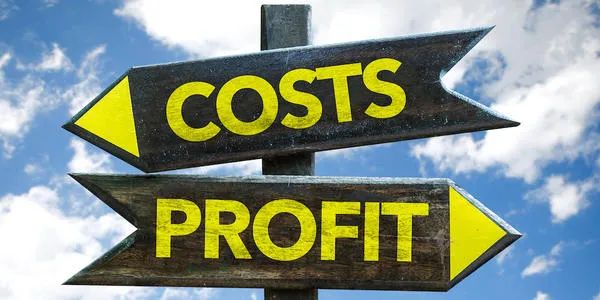Discovery at Carlson·04 An Ethical and Effective Approach to Pricing
An Ethical and Effective Approach to Pricing
Tuesday, November 17, 2020
Shortly after COVID-19 made its way to the U.S., a pair of related events unfolded. First, anxious consumers stocked up on everything from hand sanitizer and protective masks to toilet paper, rubbing alcohol, cold medicines, and the like. And in response, more than a few entrepreneurs saw the resulting shortages as a prime opportunity for quick profits.
You might remember the headlines. Some Amazon sellers began selling boxes of disinfectant wipes—which typically cost between $4 to $5—for $40 or more. Others put six-packs of paper towels on sale for close to $60, nearly five times their pre-pandemic price. And in one high-profile example, a pair of opportunistic Tennessee brothers bought more than 17,000 bottles of hand sanitizer and hawked them online at up to $70 per bottle.
On one hand, you could view this as a classic example of pricing driven by limited supply and extraordinarily high demand. But the results often didn't work out as planned. Once news of the price hikes got loose on traditional and social media channels, it generated massive public outrage. And Carlson School Professor Mark Bergen has a concise explanation for that reaction: "The pricing strategy didn't account for the social structure of market exchange."
In other words, the sellers didn't consider the broader societal impact of their efforts. And while that seemed particularly galling in the midst of a public health crisis, it's nothing new and not uncommon. "Many economists believe pricing should be completely agnostic from societal concerns, which stems in part from Milton Friedman's influential 1970 claim that 'business's sole purpose is to generate profit for the shareholders,'" he says. "Many business schools still teach that. It's what I learned and what I taught for the first 10 to 15 years of my career."

Mark E. Bergen, Professor, James D. Watkins Chair in Marketing
The approach can certainly generate robust profits, particularly given the rise of AI and machine learning tools that allow companies to dynamically calibrate pricing based on market conditions and even individual consumer behavior. But Bergen says it's not necessarily a sound long-term strategy. Those two Tennessee brothers offer a telling case in point. Once their story hit the airwaves, the state's attorney general launched a price-gouging investigation. They were mocked and even threatened across social media. And they eventually lost thousands of dollars—but avoided the attorney general's charges when they donated their stockpile to area emergency responders.
So is there a more effective way to approach pricing, one that factors in societal considerations and helps create enduring success? Bergen believes so, and his research outlines an elegant three-part framework—actually a set of questions—to guide companies in their pricing calculus:
1. What am I selling—and can my prices block access to essential products?
2. Who am I selling to—and can my prices harm vulnerable populations?
3. How am I selling—can these prices manipulate or take advantage of customers?
"If you answer no to all three questions," he explains, "you can be confident your pricing will work for your customers and also protect your company's brand over the long term."
But if you answer yes to one or more of them? "Then it’s time to rethink matters," he says."Consider the tradeoff between short-term profit and potential negative social consequences and damage to your reputation."
Bergen acknowledges the latter step can be challenging, particularly with stakeholders who focus on solely on profitability. "You may need to compromise and work to find a middle ground," he says. "But it’s possible. For example, Amazon has capped prices on essential items over the course of the pandemic. And Uber—which faced widespread criticism over its surge pricing model—now alerts customers about price hikes before they take rides."
His final recommendation: Get creative. As an example, Bergen cites Meny, a Norwegian retailer with an imaginative approach to hand sanitizer pricing. "You can buy the first bottle at the normal price, but subsequent bottles will cost around $100 apiece," he says. "That allows general accessibility, but it also prevents the type of aggressive hoarding and reselling we saw in the early days of COVID-19."

一种合乎道德且有效的定价方式
2020年11月7日,星期二
美国爆发新冠疫情后,两个相关事件先后出现。首先,焦虑的消费者开始囤积洗手液、口罩、卫生纸、外用酒精、感冒药等各类物资。随之而来的是,囤积造成的短缺被许多企业视为快速获取暴利的好机会。
您可能还记得以下几条新闻。亚马逊上平时价格4-5美元的盒装消毒湿巾被卖到了40美元及以上,六盒装纸巾要价接近60美元,几乎是疫情前的五倍。还有一条新闻备受关注:来自田纳西州的两兄弟投机倒把,购入17,000多瓶洗手液,以70美元每瓶的价格在网上倒卖。
这些事件反映了供应有限而需求飙升条件下的价格体系,但其结果往往超出预料。一旦哄抬物价的消息在传统媒体和社交媒体上发酵,就会导致社会公众的普遍愤怒。卡尔森学院的Mark Bergen教授简要解释了这一反应的原因:“这一定价策略没有考虑市场交易的社会结构”。
换言之,这些卖家没有考虑其行为的广泛社会影响。在国家遭遇公共卫生危机的情况下,这种行为显得尤其可恶,但它并不新鲜或者少见。“许多经济学家认为,定价不需考虑社会关切。这一观点的起源,一部分是米尔顿·弗里德曼1970年所做的颇有影响力的断言:‘商业的唯一目的是为股东创造利润’。许多商学院依然在传授这个思想。我也学过这个,在教育生涯的前10-15年我也是这样教的。”Bergen教授表示。
这种定价方法当然能带来大量利润,尤其考虑到目前AI和机器学习工具的兴起,企业能够根据市场状态甚至消费者的个人行为对价格进行动态调整。但Bergen表示这不是恰当的长期战略。来自田纳西州的兄弟俩就是个好例子。他们的行为被媒体报道后,该州司法部长对其发起了价格欺诈调查。他们在社交媒体上广泛地遭到嘲笑甚至威胁。最后他们把存货捐给了当地的应急响应部门,损失了数千美元,但躲过了司法部长的指控。
那么是否存在一种有效的定价方式,在考虑社会关切的同时带来持久的商业成功?Bergen的意见是肯定的。他研究设计了一个优雅的三元框架:即一系列问题,用于指导企业定价。
1. 我卖什么:我的价格是否会损害人们获得生活必需品的权利?
2. 我卖给谁:我的价格是否损害了弱势群体?
3. 我如何卖:我的价格是否造成了对客户的操纵或利用?
他表示,“如果上述三个问题的答案都为“否”,那么你的定价对客户有效,并且有利于保护公司品牌的长期价值。”如果上述一个或多个问题的答案为“是”呢?“那就需要重新考虑了。需要在获取短期利润和潜在的负面社会后果、伤害企业声誉之间进行取舍。”
Bergen承认,后一种定价方式可能是困难的,尤其对于只关注盈利的股东而言。“你需要妥协,需要找到中间立场。但这是可行的。例如,疫情期间亚马逊对生活必需品实施限价。Uber的峰时定价策略饱受诟病,但现在Uber会在顾客乘车前提示涨价。”
最后他建议:发挥创造力。Bergen介绍了挪威零售商Meny的例子,Meny的洗手液定价颇有想象力。“顾客购买第一瓶为正常价格,但加购的价格为每瓶100美元左右。这个策略让大家都能买得起,同时避免了我们在疫情初期所见到的囤积转卖。”



